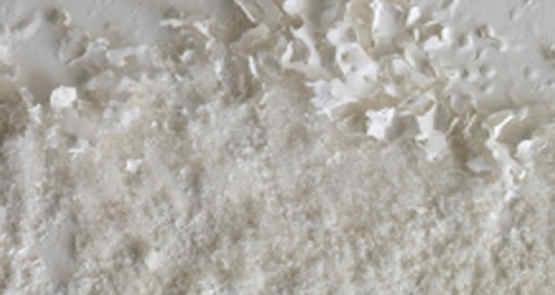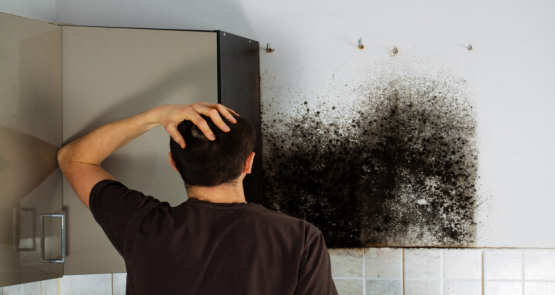Penetrating Damp Service Covering Plymouth, Devon & Cornwall
Penetrating damp is doing what is says on the tin. It’s Penetrating the shell of your home via the walls or roof and even the sub ground levels causing pain, misery and damage. All you ever hear nowadays is people worried about their problems with penetrating damp, its just such a common problem but left alone and not attended to can severely your property internally and externally. If you happen to see suspicious watermarks, mold patches, musty smells, or damp patches or damage to walls ceilings or timber you may well be a victim of penetrating damp.
Penetrating damp is defined as water passing through your property from the outside to the inside and effecting the property material and furniture. It can happen in any room and at any level from the ground up but is very different from rising damp as that only occurs from ground level to a maximum of a meter high.
What are the reasons for penetrating damp?
- External flooding from a burst river soaking into the masonry
- Untreated walls exposed to driving rain
- Cracked or blown render and mortar
- Split or damage lead flashings
- Missing or cracked roofing material such as defective slates or tiles
- Leaks from pipes not rectified
- Defective rainwater goods blocked and not functioning correctly
- Different ground floor levels
What signs of penetrating damp do I look out for?
Ongoing water penetration through the external wall into a house will eventually become saturated. From the internal plaster to the external mortar and brickwork will eventually all be soaked full of water. The internal plaster being a much darker colour as it is full of water and eventually the plaster becoming damaged by flacking, crumbling or bubbling.
There will also be a risk of woodworm, beetle attack, wet rot or dry rot setting in. The signs are:
- Puddles, water stains & drips
- Crumbling, bubbling or flaking plaster
- Expanding circles of damp patches to walls or on ceilings
- Musty odor & nasty smell
- Moss to external walls
- Burnt looking black timbers
- Black spot & mildew to internal walls
Diagnosis and Treatment Methods
Ever heard the saying that, "water moisture will always follow the path of least resistance." This is so true! But unfortunately for the victim it means that the damp problems visible are principally caused by the external conditions of the property itself. Faults can be sourced from faulty gutters, porous render mortar, or a damaged roof.
An inspection should be carried out for obvious reason first and if faults are found try and correct them as soon as possible. So firstly inspect your rainwater goods guttering and downpipes for leakages or blockages causing water to flow don the walls. Check the roof coverings for missing, cracked or broken tiles or slates. Check the external render for cracks or any cement pointing missing. If no defects in render are found you can either spray some water repellant to your brickwork or render or give the render a couple of coats of masonry paint. Remember, an external render mortar can still be porous even though it has no cracks of defects in whatsoever. It may just need a waterproof coat.
If left then penetrating damp will destroy a property leading to an extensive amount of work required to remedy it. Here at Plymouth Damp Proofing (PDP) can help you with performing a damp survey and advice you as necessary to the correct method of repair. This can include the hacking of and removal of all contaminated plaster, letting the wall dry out, installation of a DPM or damp proof membrane providing a water proof barrier prior to re-plaster with the correct specification plaster designed for purpose. If the external render is cracked the cracks can be raked out and repaired. If the render is blown it can be hacked of and patched. If not severely cracked or blown render it can be treated with either water repellant solution or masonry paint.
If the external walls are very bad we can even either hack of all the render and re-render with new sand and cement or patch repair the render and install insulation mesh render. We can treat or renew timbers where required that have fallen to woodworm or beetle attack or just a form of rot.
Please feel free to contact us for help & advice
If you have noticed any of the signs and have some concerns please feel free to call Plymouth Damp Proofing (PDP) and one of our surveyors in the team will be happy to help you and give you the correct advise possible. We can on request perform a detailed tailor made survey suitable for your home only and then give you the correct advice to remedy all and any problems we find to ensure your home stays fully protected at all times in all weathers.
Solving your penetrating damp issue & concerns
On instruction we will perform a detailed survey of your property. This is so we can ascertain exactly what is the root cause of the problem. It would be pointless and not cost effective to install certain treatments if they were not fit for purpose due to the damp issue being caused by a completely different nature but have exactly the same symptoms and appearance. As every properties damp problems and issues are different we tailor make your survey so it is specific for your properties needs and requirements. Once we have completed this and reached our conclusion we can diagnose the problem correctly and offer and install the correct treatment solutions available to rectify and fully protect your property from damp penetration.
Here's a previous project…
To give you an example of our service - a very concerned owner of a beautiful natural stone cottage in the country called us as she noticed the very signs and symptoms we have been talking about which immediately rang alarm bells. We made an appointment with her and immediately conducted a detailed survey of her property to assess the situation and severity of the condition. The survey conclusion was apparent with penetrating damp. The external mortar and stonework over time had now become porous and was soaking up the water instead of repelling it. In ordinary circumstances a traditional render system applied to the external side would cue this but due to the location of the cottage being of extreme beauty but subject to the elements and the stone material used in construction for the cottage we gave our client the best advice possible for her and her cottage so it was our recommendation to install a specialist cavity membrane, rack out the mortar joints from around the natural stone and re-point with sand cement with an additional water proofer solution added to the mix. To finish spray the whole area with water repellant until it runs freely down the wall so the mortar and stone has absorbed it completely making it water tight. This method does not damage of affect the original look of the natural stone but lets it breath freely.
How to recognize penetrating damp & what's the symptoms?
Penetrating damp or lateral damp is the progress migration of water moisture through external walls and roof structures above or below ground. Left untreated it will only get worse and cause considerable damage to the main fabric of your property. This is more apparent in older properties that have had little or no maintenance attendance whatsoever and damp issues will just make things worse causing further deterioration to the building. Modern building too can suffer from penetrating damp. If the property has been incorrectly build producing a poor quality of workmanship and design it will be subject to fall victim of damp.
Damp penetration can either affect whole wall surfaces or just be confined to isolated areas leaving just patches. It is seen noticeably worse over periods of persistent driving heavy rain. As we live in the UK we do get a lot of driving heavy rain and over long periods especially through the winter months this make you property subject to risk of penetration from water. It usually occurs where there are defects in your property.


Can cavity wall insulation cause damp?
Building regulations are always changing; cavity insulation was brought in quite a few years ago now and has proven to be tremendously popular as it increases the way your property retains heat lowering your heat loss levels. It also acts as a blocking system against cold air from coming in.
Houses built before 1930 had what was known as a double brick skin that in some cases if constructed from face brickwork would no render covered whatsoever. After 1930 the idea to build houses with two separate walls tied together with a wall tie. There was an outer block or brick wall covered with render and paint or spar dash. The inner skin was the internal sections surrounding the inside of the property covered with plaster. There was a cavity gap between the two skins, which protected the inner skin wall from penetrating damp.
Recently dampness has occurred in properties that have had cavity wall insulation fitted. Unfortunately once penetrating damp gets through the external wall and into the cavity the insulation acts as a bridge and helps it across the cavity transmitting it directly to the inner skin leading to the internal wall of the house. So it can help insulate a home but can hinder it if damp penetration is suspected. If you feel you may have these issues then it is important you take out the cavity insulation as soon as possible.
Can my family or my pets get sick from penetrating damp?
If penetrating damp is identified quickly and treated soon after diagnosis it will not be a concern at all regarding ill health. The horrid musky smell and ugly looks are nasty but to be honest any risk to health issues are very small as long as its dealt with and not left as it is not recommended that an individual lives on a daily basis with damp condition surroundings for long periods of time, the damp needs to be addressed and rectified. If living with damp for long periods of time it may affect your respiratory breathing especially if you are an asthmatic. It can also affect pets if just left untreated accepted as everyday life.
Always take note of your surroundings inside a property weather your at home or at work, constantly working or living in a property with severe damp problems may result in large patches of black spot mold as condensation may form on the cold walls if the heating is on. If you have any concerns whatsoever please feel free to call us for some advice.


Is mold caused by penetrating damp?
As mentioned penetrating damp is from an exterior fault from the fabric of you’re property letting water into the shell of your property especially more noticeable after a spell of bad whether with heavy driving rain. To identify these patchy areas you will notice the area to be damp and cold to the touch and even may have water running down it.
Mold growth spurs happens with condensation, due to the walls being cold because of the damp penetration presence the walls soon become condensate because of the higher temperature of the internal room to the wall temperature which triggers the mold growth.
Can I do a DIY repair for any damp problems?
It is not recommended that you tackle damp yourself. Taking something like this on with self-treatments will not always give you the results you require. It is very easy to misdiagnoses the problem so you may well end up spending a lot more money in the long run to get it done right as you may find yourself spend money to put right what you may have done wrong.
Our services we supply in short:
- Damp proofing advice & support
- Damp Surveys
- Basement waterproofing
- Rising damp treatments
- Condensation treatments & control
- Woodworm Treatment
- Wet rot & dry rot treatments
Remember your property is at risk if you let damp set in and do nothing about it!
Please feel free to contact us for further advice
If you are concerned about any of the above issues affecting your property, please contact us and a member of our team will be happy to help, as we are Specialists in Property Surveying.



